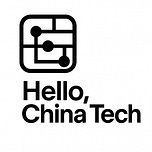Episode Overview
This episode reveals how Tencent’s Q2 earnings expose a fundamental misunderstanding of China’s AI competition. While ByteDance’s Doubao boasts 100 million users versus Yuanbao’s 24.8 million, Tencent is quietly generating actual revenue through ecosystem integration—20% growth in AI-enhanced advertising and 38% operating margins despite doubled AI investment. Our analysis uncovers why embedded AI infrastructure may triumph over standalone applications.
Timestamped Highlights
00:00 - Introduction & Market Overview
02:26 - The Real AI Battleground
05:45 - Two AI Philosophies Emerge
09:05 - Enterprise Adoption Patterns
12:18 - Investment Strategy Implications
16:00 - Future Outlook & Takeaways
Key Takeaways
• Metrics Matter More Than Users: Tencent’s 20% advertising revenue growth from AI integration delivers measurable ROI while ByteDance spends ~1 billion yuan monthly acquiring Doubao users without clear monetization paths.
• Ecosystem Beats Apps: Companies with existing platforms like WeChat (1.41B users) can embed AI invisibly across payment, gaming, and social flows, creating stickier value propositions than standalone applications.
• China’s Infrastructure Strategy: State enterprises deploying private AI installations favor integrated platforms over consumer apps, suggesting long-term competitive advantages for ecosystem players over pure-play AI companies.
• Investment Paradigm Shift: Traditional user acquisition metrics may be misleading; sustainable AI winners will demonstrate revenue per user improvements, margin expansion, and integration depth rather than viral growth alone.
• Technological Sovereignty Focus: Beijing’s emphasis on domestic AI infrastructure through companies like Huawei creates parallel ecosystem opportunities that align business strategy with national technology independence goals.
China Tech Context & Market Intelligence
Market Dynamics: China’s AI competition reflects two distinct philosophies—ByteDance’s consumer app approach versus Tencent’s invisible infrastructure strategy. This mirrors broader Chinese tech evolution from platform building to ecosystem optimization, where established players leverage existing user relationships rather than creating new behavioral patterns.
Regulatory Landscape: National emphasis on “domestically produced computing power” and data sovereignty requirements favor companies offering private, on-premise AI solutions. Tencent’s integrated approach aligns with regulatory preferences for technological self-reliance while maintaining commercial viability.
Global Implications: If ecosystem integration proves superior to standalone AI apps, Western markets may see platform giants (Google, Meta, Microsoft) adopting similar embedded strategies rather than launching separate AI products. This could reshape competitive dynamics globally.
Cross-Market Comparisons: Unlike Silicon Valley’s app-first approach, Chinese companies prioritize immediate monetization integration. This reflects different user behavior patterns, regulatory environments, and the maturity of Chinese digital payment/social ecosystems versus Western markets.
Companies & Technologies Mentioned
Major Players:
Tencent: Q2 revenue 184.5B yuan, WeChat ecosystem with 1.41B MAU, AI-enhanced advertising and gaming
ByteDance: Doubao app with 100M+ users, 410.69% YoY growth, ~1B yuan monthly user acquisition spend
Alibaba: Quark “do-engine” strategy, similar user acquisition investments as ByteDance
Emerging Companies:
Moonshot AI & Zhipu AI: Open-source model providers representing foundational technology layer
DeepSeek: AI model deployed across 60+ central SOEs and 40+ local SOEs
Technologies:
Huawei Ascend CloudMatrix 384 Supernode: Domestic GPU alternative to Nvidia for AI infrastructure
AI Integration Platforms: WeChat Mini Programs, payment flows, gaming content generation
Enterprise AI Deployments: Private, on-premise installations for data sovereignty
Resources & Further Reading
China’s AI Playbook: How State Power and Open Source Are Forging a New Order - Deep dive into Beijing’s strategy for AI technological sovereignty and ecosystem development
Turning CAPEX into Cash: Tencent’s Template for AI Monetization - Detailed financial analysis of Tencent’s Q2 results and AI investment returns
The Billion-Dollar Bonfire: China’s AI War and the Creation of the ‘Do-Engine’ - Examining why Chinese tech giants are spending billions monthly on AI user acquisition
Beyond the App Store: Decoding China’s Full-Stack AI War Across Apps, Models, and Silicon - Comprehensive analysis of China’s integrated AI strategy from hardware to applications
Unlock Deeper China Tech Intelligence
This episode just scratches the surface of China’s AI transformation. For comprehensive analysis that goes beyond surface narratives, consider joining Hello China Tech Premium.
Why Premium?
Premium subscribers get exclusive access to:
Two additional investment-focused analysesper week
Quarterly comprehensive reports on AI, semiconductors, and emerging technologies
Premium audio content with exclusive interviews and in-depth conversations
Early access to breaking analysis and strategic insights
Direct email access for custom research requests
Limited-Time Pricing
Early bird pricing available through August 31st:
$10/month (regular $15) - locks in permanently while subscribed
$100/year (regular $150/year)
The insights driving today’s discussion come from our Premium analysis series. Join the community of investors, entrepreneurs, and strategists who rely on Hello China Tech for actionable intelligence.
Subscribe to Premium | No-risk cancellation anytime
Follow & Support
Subscribe to the Newsletter: For more in-depth analysis, subscribe to the Hello China Tech newsletter on Substack.
Our Production Process: For a detailed explanation of our production process and our principles on using generative AI, please read our full statement: https://hellochinatech.substack.com/p/podcast-ai-statement







